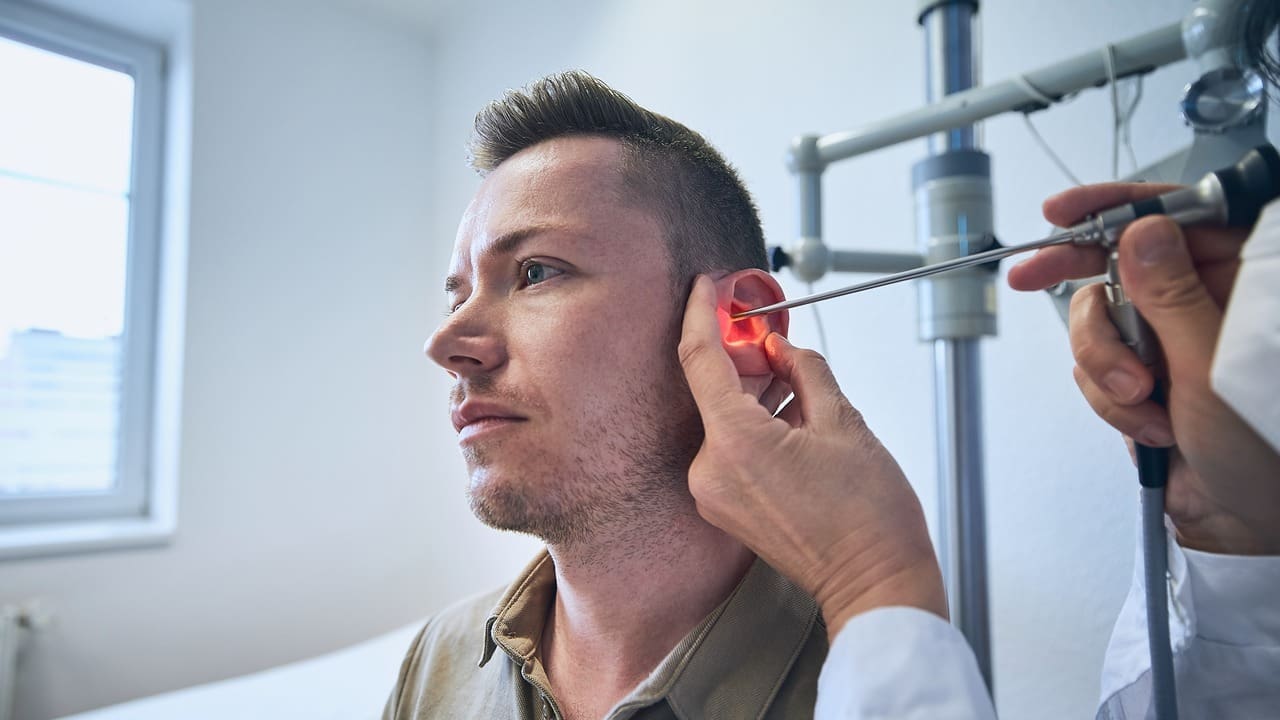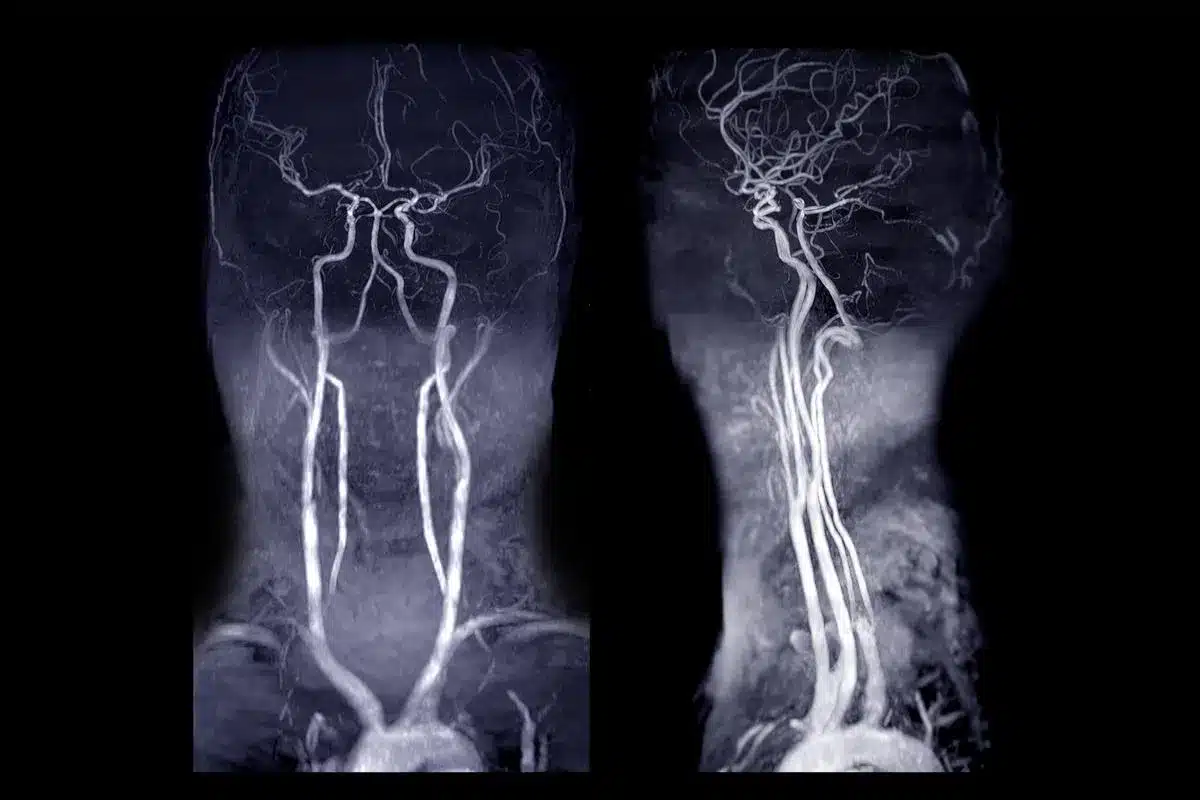
We’re here to give you a detailed look at acoustic neuroma. It’s a non-cancerous tumor that impacts the vestibulocochlear nerve. This condition, also called vestibular schwannoma, can lead to hearing loss and tinnitus.
At Liv Hospital, we know how vital it is to get a correct diagnosis and effective treatments for acoustic neuroma. In this article, we’ll dive into the essential facts about it. This includes its symptoms, how it’s diagnosed, and treatment choices. This way, you can make informed decisions about your health.
By grasping the complexities of acoustic neuroma, we can help patients manage their condition better. This improves their quality of life.
Key Takeaways
- Acoustic neuroma is a benign tumor that affects the vestibulocochlear nerve.
- Symptoms include progressive hearing loss and tinnitus.
- Accurate diagnosis is key for effective treatment.
- Liv Hospital offers advanced care for acoustic neuroma.
- Knowing your treatment options is vital for managing the condition.
What Is Acoustic Neuroma? A Benign Tumor of the Vestibulocochlear Nerve

Acoustic neuroma is a growth on the vestibulocochlear nerve. This nerve helps us hear and balance. We’ll look at what it is, how common it is, and who might get it.
Definition and Medical Classification
Acoustic neuroma, also known as vestibular schwannoma, is a benign tumor. It grows slowly and is not cancerous. It’s a type of schwannoma, a tumor from Schwann cells that cover nerve fibers.
The difference is where it grows. It’s on the vestibulocochlear nerve.
Prevalence and Risk Factors
Acoustic neuroma is rare, affecting about 1 in 100,000 people yearly. It can be caused by high radiation exposure, mainly in childhood. Genetic conditions like Neurofibromatosis Type 2 (NF2) also increase the risk.
Genetic mutations are thought to be a big part of why it happens.
Knowing about acoustic neuroma helps doctors and patients make better choices. It’s key for diagnosis and treatment.
Common Symptoms of Acoustic Neuroma

Knowing the symptoms of acoustic neuroma is key for early treatment. We’ll look at the common signs, how they vary, and their effects on patients.
Progressive Hearing Loss
Progressive hearing loss is a common symptom. The tumor affects the nerve that carries sound to the brain. This leads to a gradual loss of hearing, usually in one ear.
Tinnitus (Ringing in the Ears)
Tinnitus is another common symptom. It’s a ringing, buzzing, or hissing sound in the ear without any outside noise. This can be very bothersome and affect daily life. Sometimes, tinnitus is linked to a tinnitus brain tumor.
Do Symptoms Come and Go?
Symptoms of acoustic neuroma can be constant or change over time. For example, hearing loss usually gets worse, but tinnitus and balance issues can vary. Knowing this helps with treatment plans.
| Symptom | Characteristics |
|---|---|
| Progressive Hearing Loss | Gradual decline in hearing, often in one ear |
| Tinnitus | Ringing, buzzing, or hissing sound without external source |
| Balance Disturbances | Vertigo or unsteadiness, can be persistent or intermittent |
The symptoms of acoustic neuroma can greatly affect a patient’s life.- Dr. a neurosurgeon, says, “Early detection is vital to save hearing and brain function.” Understanding these symptoms and their changes is key to managing the condition.
Beyond Hearing: Additional Warning Signs
An acoustic neuroma can show itself in many ways, not just through hearing loss. As it grows, it can harm nearby areas, causing different health problems.
Vertigo and Balance Problems
Vertigo is a big symptom of acoustic neuroma. It makes you feel like you’re spinning. This happens when the tumor presses on the vestibular nerve, causing balance issues. People might feel dizzy or unsteady, making simple tasks hard.
Facial Numbness and Weakness
When the tumor gets bigger, it can squeeze the facial nerve. This leads to facial numbness or weakness. It can make it hard to smile or even close your eye on one side.
Neck Pain and Headaches
Neck pain and headaches can also happen. They come from the tumor’s pressure on nerves and other areas. These symptoms can really lower your quality of life, so you need to see a doctor.
| Symptom | Description | Possible Cause |
|---|---|---|
| Vertigo | Spinning sensation, dizziness | Vestibular nerve compression |
| Facial Numbness | Numbness or weakness in facial expressions | Facial nerve compression |
| Neck Pain and Headaches | Pain in the neck, frequent headaches | Pressure on surrounding nerves and structures |
Knowing these extra warning signs is key to catching acoustic neuroma early. If you notice any of these symptoms, see a doctor right away.
Diagnostic Pathway for Acoustic Neuroma
Diagnosing acoustic neuroma involves several steps. We use hearing tests and advanced imaging. Accurate diagnosis is key for the right treatment.
Audiogram Testing and Hearing Evaluation
An audiogram test is the first step. It checks hearing levels. Asymmetrical hearing loss often points to acoustic neuroma.
Audiological Evaluation Process:
| Test | Purpose |
|---|---|
| Pure Tone Audiometry | Measures hearing thresholds across different frequencies |
| Speech Audiometry | Assesses ability to understand speech |
MRI Imaging: The Gold Standard
MRI is the top choice for diagnosing acoustic neuroma. It shows the tumor and its surroundings clearly. MRI helps us confirm the diagnosis and plan treatment.
Additional Diagnostic Procedures
More tests might be needed for a full picture. These include ABR testing and ENG. They help us understand the tumor’s impact.
“The use of MRI has revolutionized the diagnosis of acoustic neuroma, allowing for earlier detection and more precise treatment planning.” – Expert in Neuro-otology
We use audiograms, MRI, and other tests to diagnose acoustic neuroma. This way, we can create a treatment plan that meets the patient’s needs.
Understanding Your Diagnosis: Tumor Classification
Tumor classification is key in diagnosing acoustic neuroma. It affects treatment choices and patient results. We look at several important factors to accurately classify the tumor.
Tumor Size and Staging
The tumor’s size is a big factor in its stage. Smaller tumors are seen as earlier stage. Larger ones, pressing on nearby areas, are considered more advanced.
The size and stage of the tumor are vital for choosing the right treatment. For example, smaller tumors might be watched or treated with radiation. Larger ones might need surgery.
Growth Rate Considerations
The growth rate of the tumor is also important. Fast-growing tumors need quicker, more aggressive treatment. Slow-growing or stable ones might be watched more closely.
Knowing the growth rate helps us tailor treatment to each patient. Regular MRI scans are key to tracking growth and adjusting treatment plans.
By looking at size and growth rate, we can give a better prognosis and plan effective treatment. This personalized care ensures patients get the best treatment for their needs.
Acoustic Neuroma vs. Vestibular Schwannoma: Terminology Explained
It’s important to know the difference between acoustic neuroma and vestibular schwannoma. These terms are used a lot in medical talks. Knowing what they mean helps patients understand their health better.
Medical Naming Conventions
The names “acoustic neuroma” and “vestibular schwannoma” are often mixed up. But, they have different roots. “Acoustic neuroma” was used because it was thought to start from the acoustic nerve. But, studies showed it really comes from the vestibular nerve’s Schwann cells.
This led to the term “vestibular schwannoma.” For more info, check out the National Institute on Deafness and Other Communication.
Anatomical Distinctions
Both names talk about the same thing—a tumor on the vestibular nerve. But, “vestibular schwannoma” is more precise. It points out the tumor’s start from the vestibular nerve’s Schwann cells.
“Acoustic neuroma” used to be more about hearing loss. Knowing these details helps patients understand their diagnosis. It’s good to talk to your doctor about your specific case.
Treatment Option 1: Observation Strategy
For some patients with Acoustic Neuroma, watching the tumor grow is a good first step. This means they get regular tests to see how the tumor is doing. It’s a way to avoid surgery or radiation right away.
When “Wait and Watch” Is Appropriate
Choosing to watch and wait depends on a few things. These include how big the tumor is, how fast it’s growing, and the patient’s health. Small tumors that don’t bother the patient much might be watched closely. Research shows this can work for slow-growing tumors.
Monitoring Protocols and Follow-up Schedule
Patients on this path get regular MRI scans. These scans check if the tumor is getting bigger. How often they get these scans can change, but it usually starts every 6 to 12 months.
- Regular imaging tests (MRI or CT scans)
- Assessment of tumor size and growth rate
- Evaluation of symptoms and their impact on quality of life
By watching the tumor closely, we can see if it’s getting bigger. This helps us decide when to start more serious treatments. It helps keep the patient’s life as normal as possible.
Treatment Option 2: Radiation-Based Approaches
Stereotactic radiosurgery is a precise way to treat vestibular schwannoma. It gives a high dose of radiation to the tumor. This helps keep healthy tissue safe.
Stereotactic Radiosurgery Explained
This method is non-invasive and uses advanced technology. It targets the tumor with great accuracy. “It’s a game-changer for patients who are not ideal candidates for surgery,” says -Dr. a renowned neurosurgeon. We use it to stop tumor growth and keep neurological function.
Latest Advances in Vestibular Schwannoma Treatments
New advancements in radiation therapy have made treatments better. Techniques like fractionated stereotactic radiotherapy let us give radiation in sessions. This makes treatments more effective and less harmful.
Expected Outcomes and Side Effects
Patients who get stereotactic radiosurgery often see their tumor controlled well. Many see their tumor stabilize or even shrink. But, there can be side effects like hearing loss, tinnitus, or facial numbness. We watch patients closely to lessen these effects and get the best results.
Key benefits of radiation-based approaches include:
- Non-invasive treatment with minimal recovery time
- High precision in targeting the tumor
- Effective tumor control with possible regression
Treatment Option 3: Surgical Removal Techniques
Surgical removal is a key treatment for acoustic neuroma, aiming for a cure. The choice to have surgery depends on the tumor’s size, location, and the patient’s health.
Surgical Approach Selection
The right surgical approach is vital. It depends on the tumor’s size and the patient’s hearing. There are three main methods: retrosigmoid, translabyrinthine, and middle fossa. Each is chosen based on the case’s specifics.
| Surgical Approach | Indications | Hearing Preservation |
|---|---|---|
| Retrosigmoid | Large tumors, hearing preservation | Possible |
| Translabyrinthine | Tumors of any size, sacrifice hearing | No |
| Middle Fossa | Small tumors, hearing preservation | Possible |
Recovery Timeline and Rehabilitation
Recovery from surgery can take weeks to months. Patients might face temporary facial weakness, hearing loss, or balance problems. Physical and speech therapy are often needed for rehabilitation.
Potential Complications and Management
Surgery comes with risks like infection, cerebrospinal fluid leakage, and facial paralysis. It’s important to follow up closely with the surgical team to manage these risks.
Bilateral Acoustic Neuroma and Genetic Connections
When acoustic neuromas appear on both sides, it often points to a genetic issue. We’ll look into how bilateral acoustic neuromas are linked to neurofibromatosis type 2. This genetic disorder makes people more likely to get tumors on their nerves.
Neurofibromatosis Type 2 Link
Neurofibromatosis type 2 (NF2) is a rare genetic condition. It causes tumors on nerves, including both sides of the acoustic neuromas. People with NF2 tend to get tumors younger and often inherit it.
Key characteristics of NF2 include:
- Development of bilateral acoustic neuromas
- Multiple tumors on the cranial and spinal nerves
- Early onset of symptoms, often in the teenage years or early twenties
Are Acoustic Neuromas Hereditary?
Most acoustic neuromas happen by chance, but some are linked to genetic conditions like NF2. In these cases, the condition is passed down through families. This means family members might also get similar tumors.
Genetic Testing Recommendations
People with a family history of NF2 or bilateral acoustic neuromas should get genetic testing. This test looks for NF2 gene mutations. It helps find tumors early and manage them better.
| Genetic Testing Benefits | Genetic Testing Limitations |
|---|---|
| Early detection of NF2 gene mutations | May not detect all genetic mutations |
| Identification of family members at risk | Results may not predict the severity of the condition |
| Guidance for management and treatment options | May have emotional and psychological implications |
Living with Acoustic Neuroma: Quality of Life Considerations
Acoustic neuroma, though not cancerous, can greatly change one’s life. It requires careful management. People often struggle with daily tasks due to symptoms and seek ways to improve their situation.
Managing Persistent Symptoms
It’s key to manage symptoms of acoustic neuroma to keep a good quality of life. Symptoms like tinnitus, hearing loss, and balance problems are tough. Effective symptom management comes from medical treatments and lifestyle changes. For example, vestibular rehabilitation therapy can help with balance.
Hearing Rehabilitation Options
Hearing rehabilitation is important for those with acoustic neuroma. It includes cochlear implants and hearing aids to improve hearing. “Rehabilitation can make a big difference in the lives of those affected,” say doctors.
Support Resources and Communities
Support from healthcare, family, and groups is very important. Meeting others who face similar issues can offer emotional support and advice. Support resources are online and in local communities, helping those living with acoustic neuroma.
Conclusion: Advances in Understanding and Treating Acoustic Neuroma
We’ve looked into acoustic neuroma, a non-cancerous tumor that affects the vestibulocochlear nerve. It can greatly impact a person’s quality of life. Thanks to new treatments, those with this condition have better chances of recovery.
It’s key to understand acoustic neuroma to catch it early and manage it well. Today, we have many treatments like watching it, using radiation, or surgery. These options give hope to those wanting to ease their symptoms and hear better.
New treatments for acoustic neuroma have made a big difference. Techniques like stereotactic radiosurgery and microsurgery are now more precise. Also, MRI imaging has improved, helping doctors detect and treat it sooner and more accurately.
Looking ahead, we need to keep researching and finding new ways to treat acoustic neuroma. This will help us offer the best care to patients from around the world
FAQ
What is the difference between acoustic neuroma and vestibular schwannoma?
Both terms describe a benign tumor on the vestibulocochlear nerve. “Acoustic neuroma” is more common. “Vestibular schwannoma” is more precise anatomically.
What are the common symptoms of acoustic neuroma?
Symptoms include hearing loss, tinnitus, vertigo, and balance issues. You might also feel facial numbness or neck pain. These symptoms can change in severity.
How is acoustic neuroma diagnosed?
Audiogram tests check for hearing loss. MRI imaging is key for diagnosis. More tests might be needed to confirm the diagnosis.
What are the treatment options for acoustic neuroma?
Treatments include watching the tumor, radiation, or surgery. The choice depends on the tumor’s size and the patient’s health.
Is acoustic neuroma hereditary?
Yes, it can run in families, often linked to NF2. Genetic tests might be suggested for those with a family history.
Can acoustic neuroma cause vertigo and balance problems?
Yes, it can. The tumor affects the vestibulocochlear nerve, which controls balance.
What is the role of MRI in diagnosing acoustic neuroma?
MRI is essential for diagnosis. It shows the tumor and surrounding areas, helping plan treatment.
Are there any support resources available for individuals living with acoustic neuroma?
Yes, many support groups and resources exist. They help manage symptoms and improve quality of life.
Can acoustic neuroma be treated with radiation?
Yes, radiation treatments like stereotactic radiosurgery are options. They aim to slow tumor growth while protecting nearby tissues.
What are the possible complications of acoustic neuroma surgery?
Surgery can lead to hearing loss, facial weakness, or balance issues. The risk depends on the surgery and individual factors.
How does acoustic neuroma affect hearing?
It can cause hearing loss by affecting the vestibulocochlear nerve. The loss varies with the tumor’s size and location.
Are acoustic neuromas cancerous?
No, they are benign. But, they can cause symptoms and affect life quality if not treated.
References
- NCBI Bookshelf : https://www.ncbi.nlm.nih.gov/books/NBK470177
- NHS (Acoustic Neuroma) : https://www.nhs.uk/conditions/acoustic-neuroma







